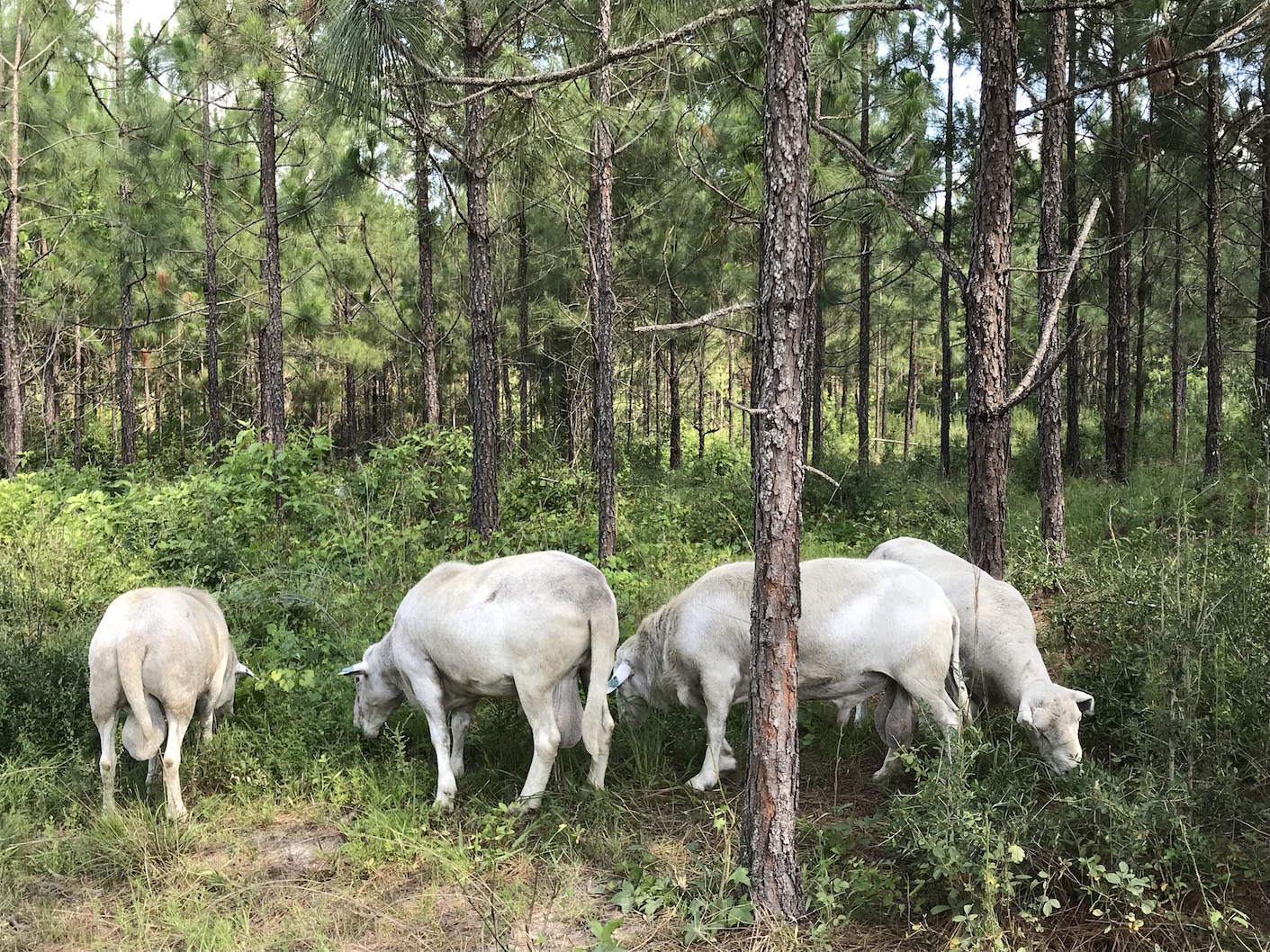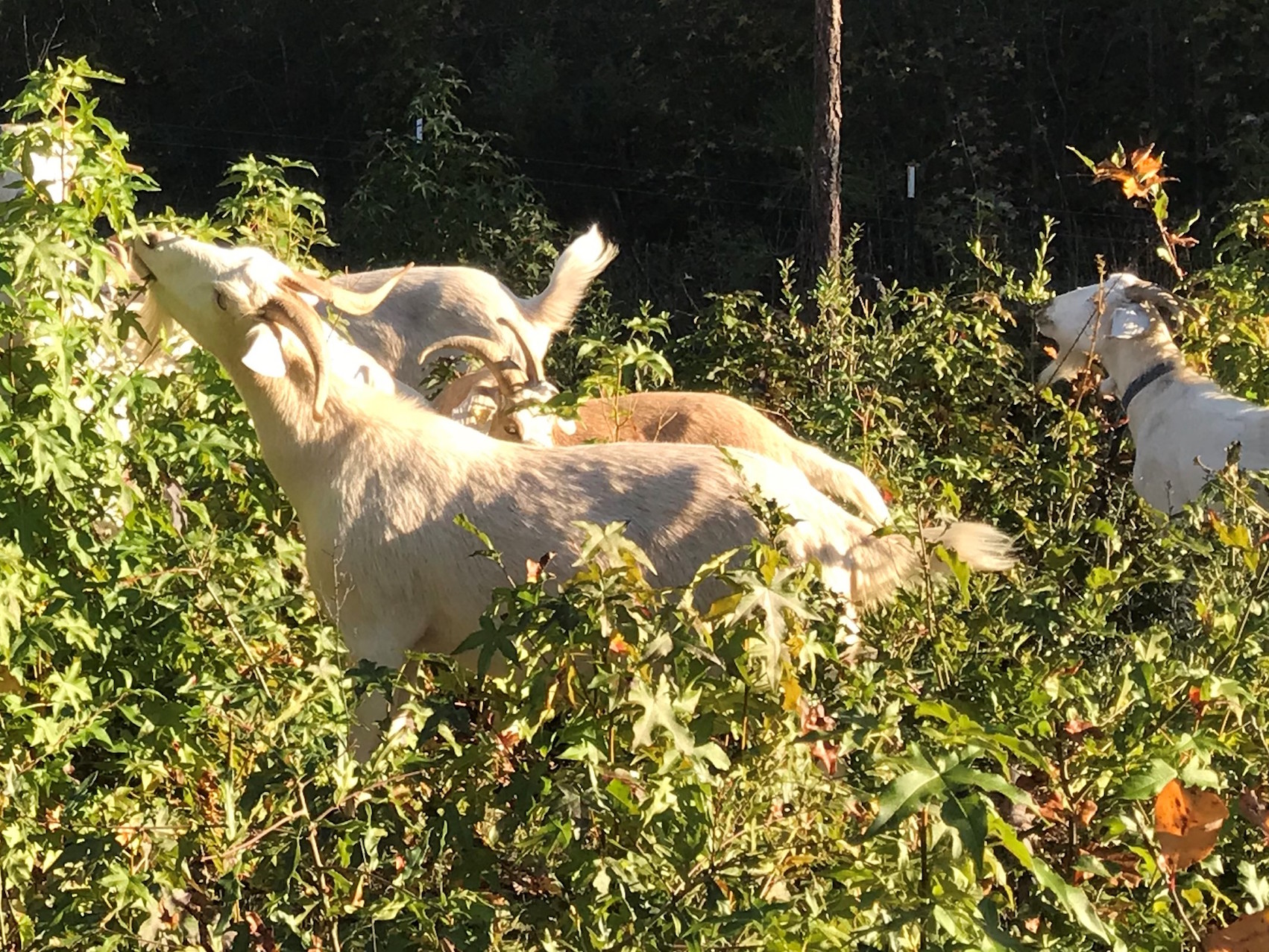Non-industrial private landowners hold 87% of the total woodland coverage (69%; 23 million acres) in Alabama. Woodlands have been primarily used for timber production (generated US$ 21 billion annual revenue) (AFC no date) and their potential use for managed grazing is largely ignored. Woodland grazing can significantly support animal production, especially for small farmers, who do not have enough pasture acreage to meet the forage requirements for their animals. A majority of small farmers hold woodlands, but they are not managing them for sustainable grazing.

Managing woodlands for grazing can minimize forage deficit by allowing farmers to conserve forages grown in pastures (as hay or stockpiled form) and use the conserved forages during lean periods (September/October–March/April) to minimize feeding costs (Karki and Karki 2017). Woodland grazing can also decrease the competition of understory vegetation with target trees and reduce the fuel build-up, thereby minimizing or avoiding the possible fire hazards. Additionally, animals are protected from direct sunlight, extreme heat, and chilling winds because of natural shade and barricade created by trees in woodlands. Moreover, consumption of woody species and vines present in woodlands helps minimize gastrointestinal parasites in animals (Karki 2017).
Benefits from woodland grazing can be maximized with proper management. However, little thought has been given to exploit such potentials. One of the constraints in grazing woodlands is limited or no consumption of non-target plants that are beyond the reach of grazing animals. Previous studies revealed that goats consumed woodland vegetation available up to an average height of 5 ft. (Khatri et al. 2016) and sheep consumed from up to 2.9 ft. (Sanon et al. 2007). To increase the utilization of non-target vegetation in woodlands, Tuskegee University researchers lowered the non-target-plant heights and evaluated its effects on various parameters with the funding support of USDA/NIFA/AFRI and McIntire Forestry Research Program.
The study site consisted of six woodland plots (1-acre each) located at Atkins Agroforestry Research and Demonstration Site. Plots were fenced on all sides and facilities, such as waterers, mineral feeders, and portable shelters were established in every plot. Each plot was demarcated into four equal parts (0.25-acre each) with marking flags, and three cutting treatments (0’, 3’, or 5’ from the ground level) or a control (no cutting) of non-pine (non-target) plant species randomly assigned to the divided parts within each plot. When the cut plant stubs sprouted and developed a full canopy (Figure 1), data on solar radiation and vegetation biomass were collected. Kiko wethers (Figure 2) and Katahdin rams (Figure 3) were rotationally stocked in the plots, and their diurnal behavior and distribution patterns monitored.

Cutting of non-pine vegetation increased solar-radiation influx to the woodland floor by 4 to 16 times (415-1579%) versus control. As a result, biomass productivity (up to 5.5 ft.) increased by 36-107% in the cut areas versus the control. Animals spent more time in areas where the non-pine plants were cut to lower heights compared to the control (0’>3’>5’>C). Higher vegetation availability, more openness, and easier access to different portions of the plots, where non-pine plants were cut, might be possible explanations for animals’ spending more time in these areas. Animals maintained the FAMACHA score (a measure of anemic condition in goats and sheep caused by Haemonchus contortus, a blood sucking gastrointestinal parasite) of 2 or lower, and the body condition score of wethers remained 2.6 or higher and of rams 3.7 or higher while stocked in woodland plots during the summer of 2018. Grazing animals did not damage the target trees, except a few, very young longleaf pines located close to animal shelters.
Results of the current study revealed multiple benefits of cutting the non-target plants in woodlands to enhance the grazing opportunity for small ruminants. The management as used in this study offers a new insight for utilizing woodlands to promote the overall health and outcome of the whole system. Woodland owners in the United States may be eligible for getting the cost-share support from USDA NRCS through the Environmental Quality Incentives Program (EQIP) to develop fencing and watering systems required for integrating grazing animals in woodlands. They need to contact the NRCS field office located in their counties and apply for the support to increase the profit margin by sustainably grazing woodlands.

References
AFC, Alabama Forestry Commission (No date). Alabama forest facts. http://www.forestry.alabama.gov/forest_facts.aspx. Accessed 8 December 2018
Karki LB, Karki U (2017) The socioeconomic and ecological impact of cool season forage production: A case of Black Belt Counties, Alabama. Professional Agricultural Workers Journal: Vol. 4, Issue 2, Page 65 http://ageconsearch.umn.edu/record/262322/files/The%20Socioeconomic%20and%20Ecological%20Impact%20of%20Cool%20Season%20Forage%20Production.pdf. Accessed 8 December 2018
Karki U (2017) Woodland grazing notes with research highlights. Cooperative Extension, College of Agriculture, Environment and Nutrition Sciences, Tuskegee University, Publication No. TUAG1017-01. https://www.tuskegee.edu/Content/Uploads/Tuskegee/files/CAENS/TUCEP/Livestock%20program/WoodlandGrazing.pdf. Accessed 8 December 2018
Khatri R, Karki U, Bettis J, Karki Y (2016) Grazing with goats changed the woodland plant-species composition during summer. Professional Agricultural Workers Journal: Vol. 4: No. 1, 10.
https://tuspubs.tuskegee.edu/cgi/viewcontent.cgi?referer=https://scholar.google.com/&httpsredir=1&article=1078&context=pawj. Accessed 8 December 2018
Sanon H, Kaboré-Zoungrana C, Ledin I (2007) Behaviour of goats, sheep and cattle and their selection of browse species on natural pasture in a Sahelian area. Small Ruminant Research. doi: https://doi.org/10.1016/j.smallrumres.2005.09.025

